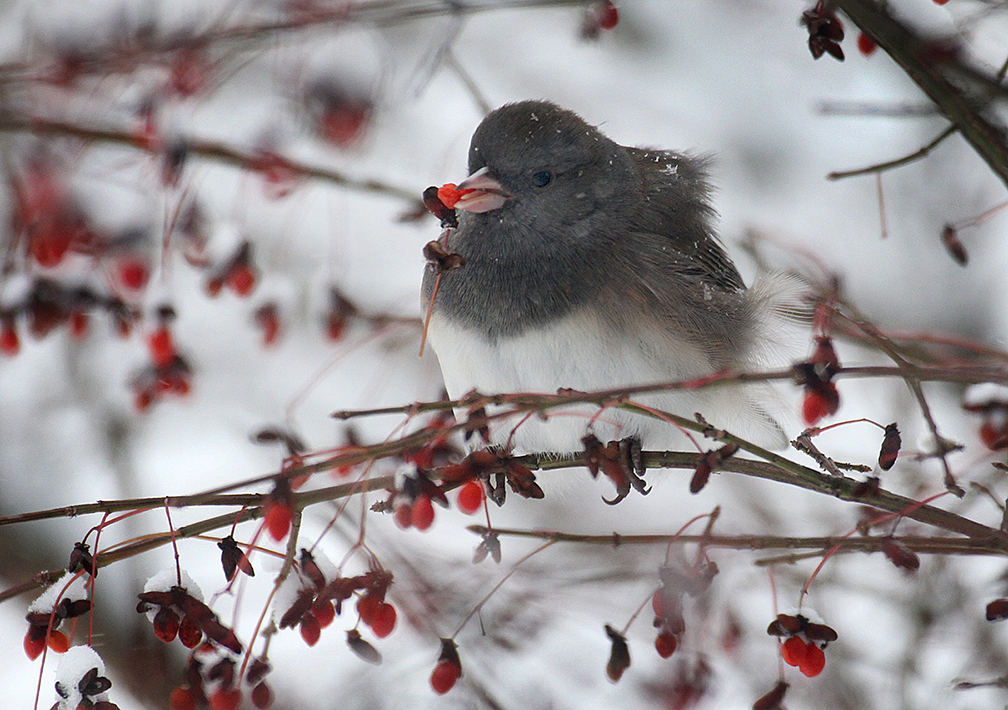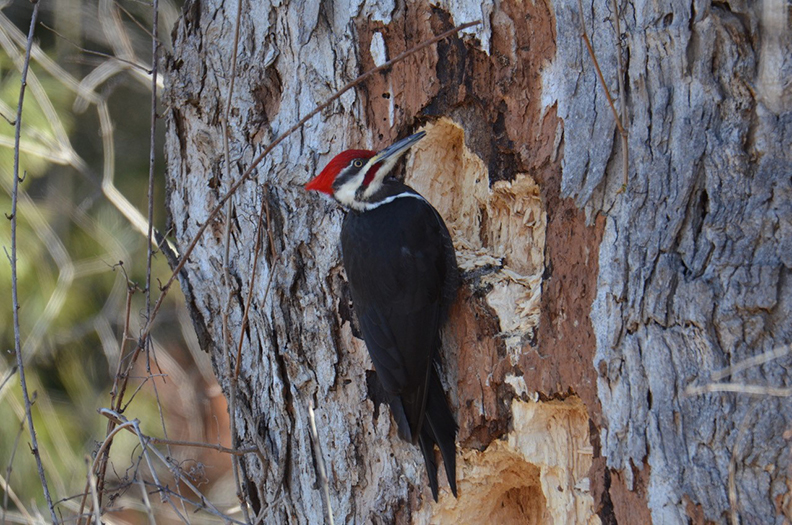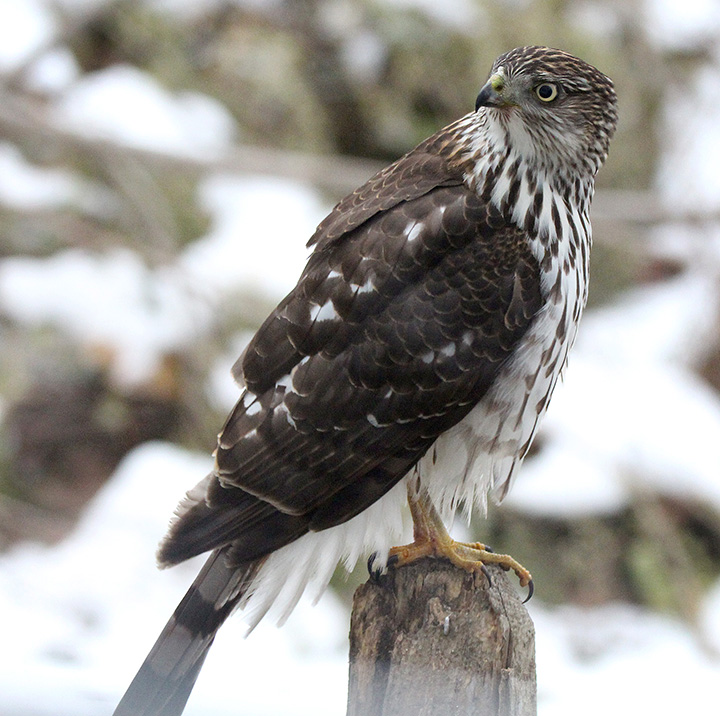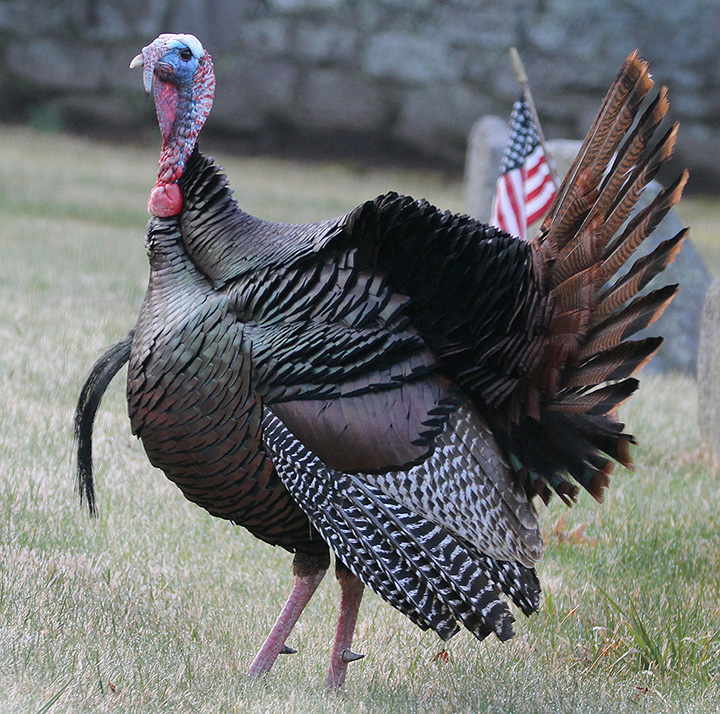Sightings From Readers

PHOTO: A dark-eyed junco eats a berry following a recent snowfall in New England. Photo By Chris Bosak.

by Chris Bosak
Weirs Times Columnist
The first major snowstorm of the year hit New England with a varying degree of impact. Parts of the region were socked with a foot or more, while other parts were hardly touched.
I woke up to about a foot of light snow and I loved it. As anticipated, the activity at the bird feeder was frenetic. Juncos, dozens of them, along with a few white-throated sparrows and a lone song sparrow grazed nervously on the ground under the feeder. Chickadees, titmice and nuthatches politely took turns at the hopper feeder and a pair of Carolina wrens occupied the platform feeder.
The wrens were quickly displaced by a boisterous blue jay who made it very clear whose turn it was at the feeder. Not that the blue jay waited patiently in the first place. The big, beautiful bird filled its crop and took off to parts unknown. A shy cardinal pair hid among the tangle of forsythia branches. Neither one ventured over to grab some sunflower seeds.
For some parts of New England, it was the first major snowfall in more than two years. Personally, I missed the snow. Watching the feeders after (or during) a good snowfall is one of my favorite pastimes. This one didn’t disappoint.
Speaking of blue jays, I heard some interesting stories from a few readers last week about these birds.
Andree from Quebec, Canada, wrote to say blue jays come flying in “when I simply ring the feeding bell.”
Andree added a fitting quote about the season: ““The human species spent 2020 in hibernation, estivation, brumation and torpor. We are ready for the 2021 nectar.”
Deb from Royalston, Mass., said blue jays are “in charge” at her feeders. A hairy woodpecker they named “Spike” is the real bird boss, however, she wrote. When Spike is not around, the blue jays rule the roost. She tried a few blue jay deterrents to give the smaller birds a chance, but the jays figured out the tricks.
“I give up. The blue jays won. They are beautiful birds,” she wrote.
Spike may be the boss there, but their favorites are the red-bellied woodpeckers, which continue to expand northward.
Deb also mentioned that a flock of evening grosbeaks had been visiting as well. I’m still waiting for mine to arrive.
Nancy and Paul from Dublin have also had daily visits from a red-bellied woodpecker. “We knew they were in our area, but until this year we had not had one come to our feeder,” they wrote.
Nancy and Paul also had red-breasted nuthatches and evening grosbeaks. “We have not seen either of these birds in many years. It may be as many as 40 years since seeing evening grosbeaks. This morning there were more than we were able to count, all squabbling with each other over seeds.”
Michael, also from Dublin, was intrigued by a ring-necked pheasant sighting — a first for Michael in 26 years as a Dublin resident. Ring-necked pheasants are native to Asia and were introduced to the U.S. as a game bird in the late 1800s and remain of the most popular game birds in the country. They live year-round in New England, but many do not survive the harsh winters as most of the birds seen in the wild have escaped from hunting grounds.
Ken from Winchester saw a sizable flock of eastern bluebird last week and wondered if they would be staying in New England all winter. The answer is probably. Many bluebirds do tough out our winters. Offer some mealworms at your feeding station and you just may get some visits from these enchanting birds.
A few weeks ago I wrote about blue jays filling their crops with suet nuggets I had offered on my platform feeder. Margaret from East Alstead replied with an interesting story about suet. She said downy and hairy woodpeckers take chunks of suet and fill in cracks in a wooden support post on her porch. They return later to eat it, of course. Margaret likens the behavior to utilizing a tool to perform a function.
Ken from Wisconsin wrote to say he has noticed a lack of chickadees at his feeding station this year. In past years, “I’ve always had swarms of them at my feeder,” he wrote. It is a concern I hear a lot and, while chickadees are not listed as a threatened bird, it is a trend to keep an eye on.
Ken closed the email with a touching memory: “I miss them. As a retired forester, there were many extremely cold snowy days I spent all alone cruising timber in the deep woods. Chickadees were my only companion and they always cheered me up.”
I seem to be getting plenty of chickadees still, but I don’t doubt that others are seeing far fewer. Drop me a line and let me know how your chickadee population is holding up.
Merry Christmas, everyone.
Chris Bosak may be reached at chrisbosak26@gmail.com or through his website www.birdsofnewengland.com



